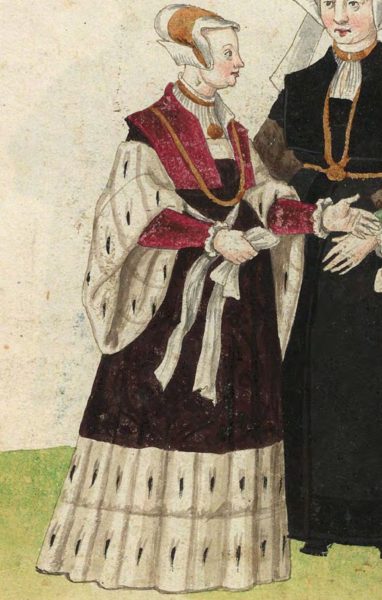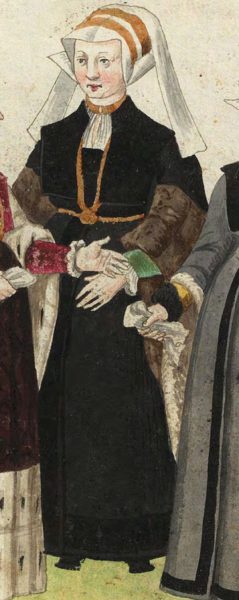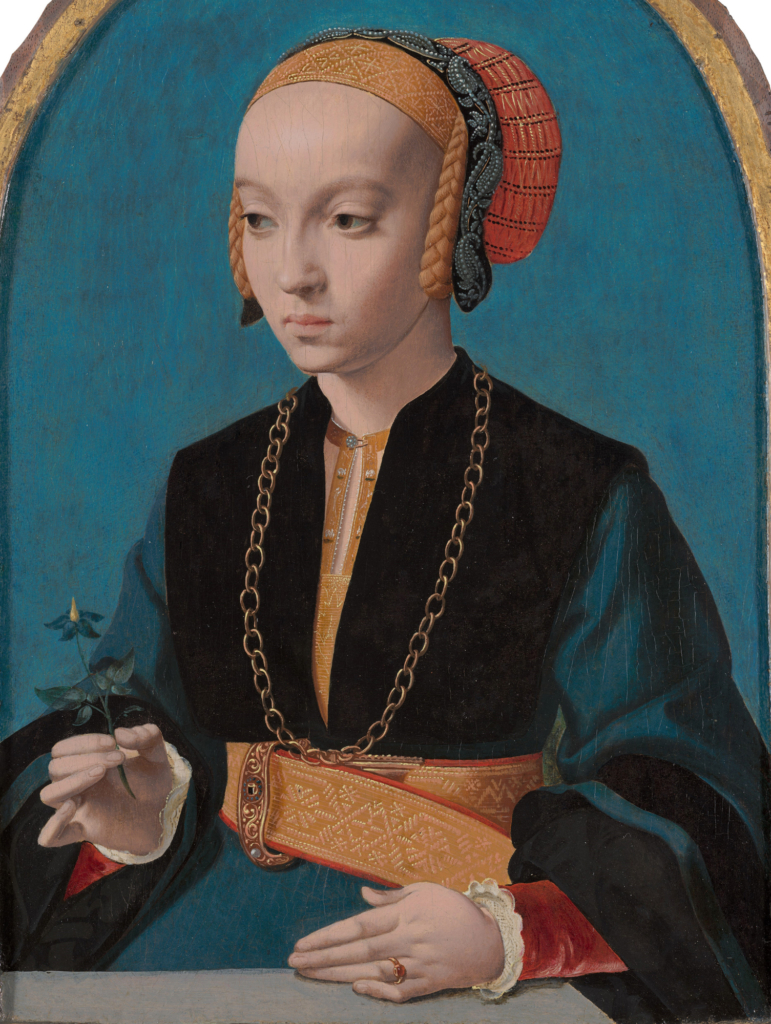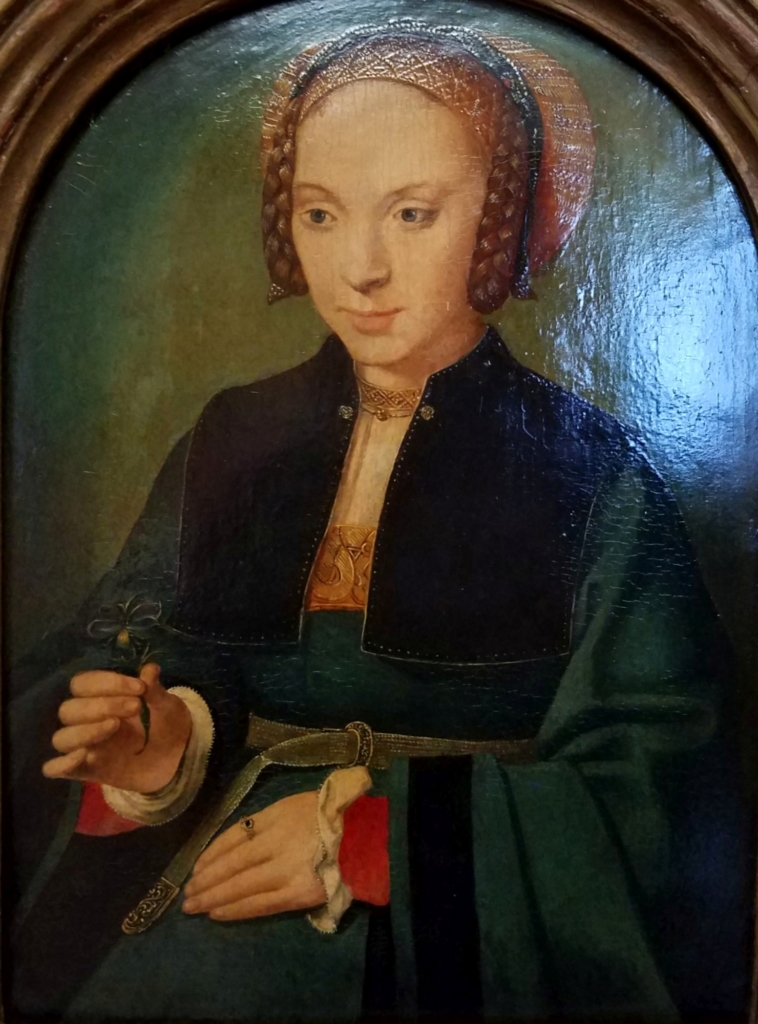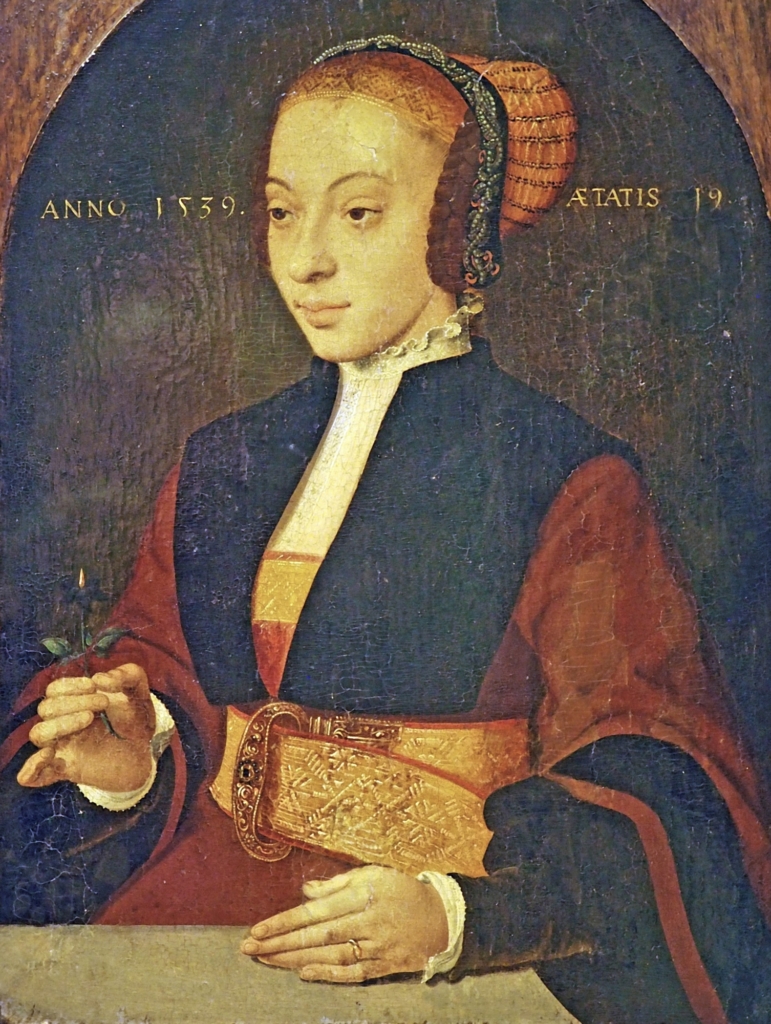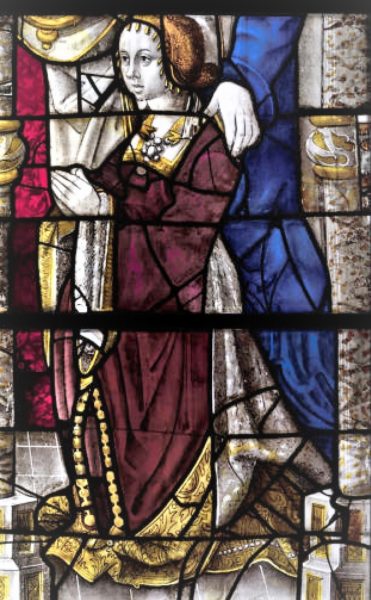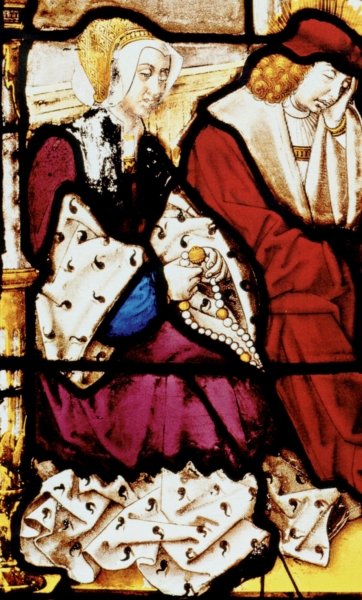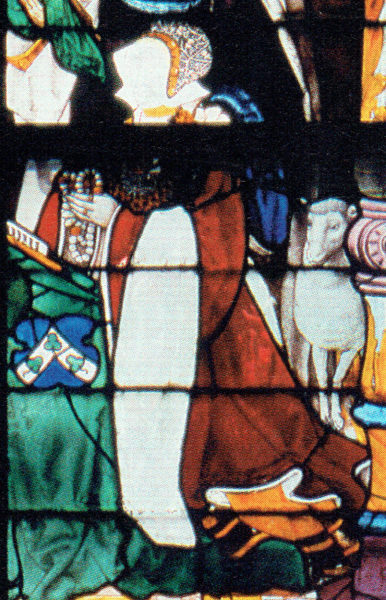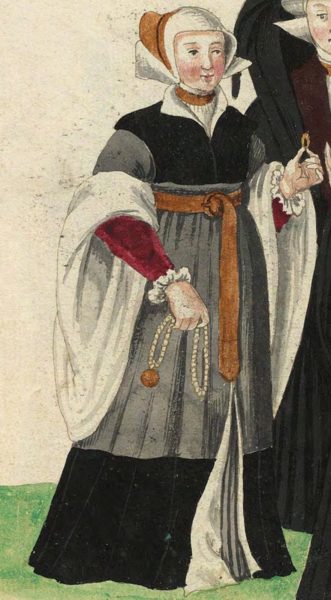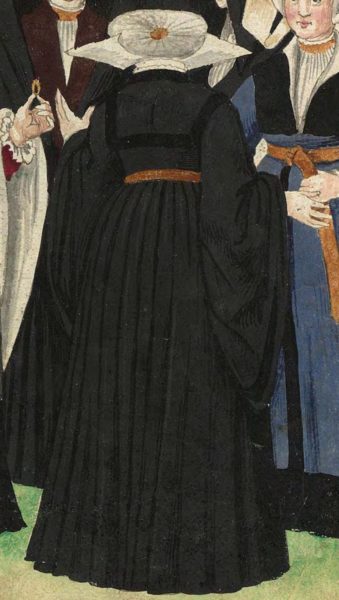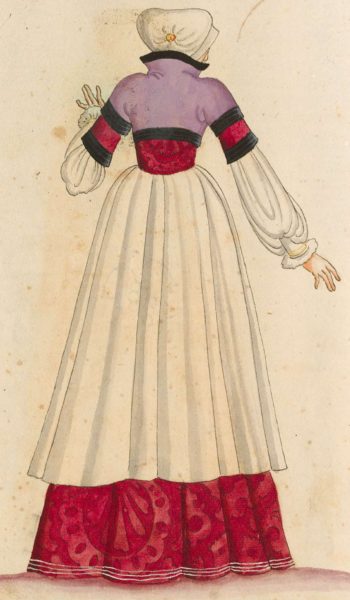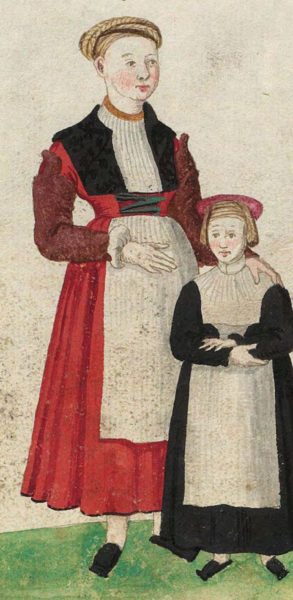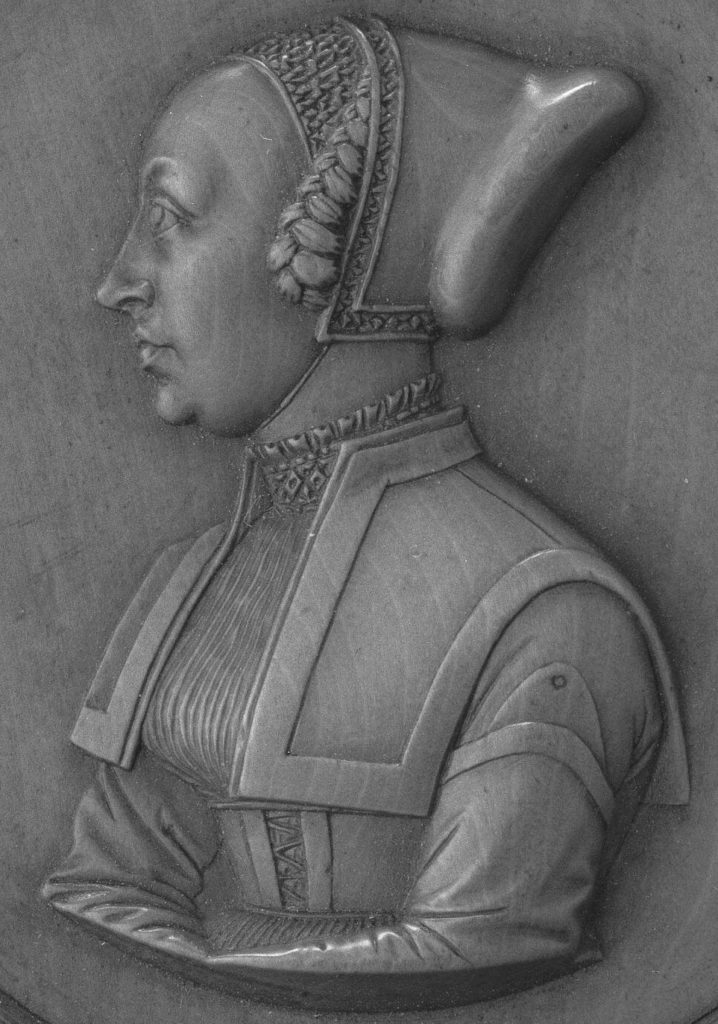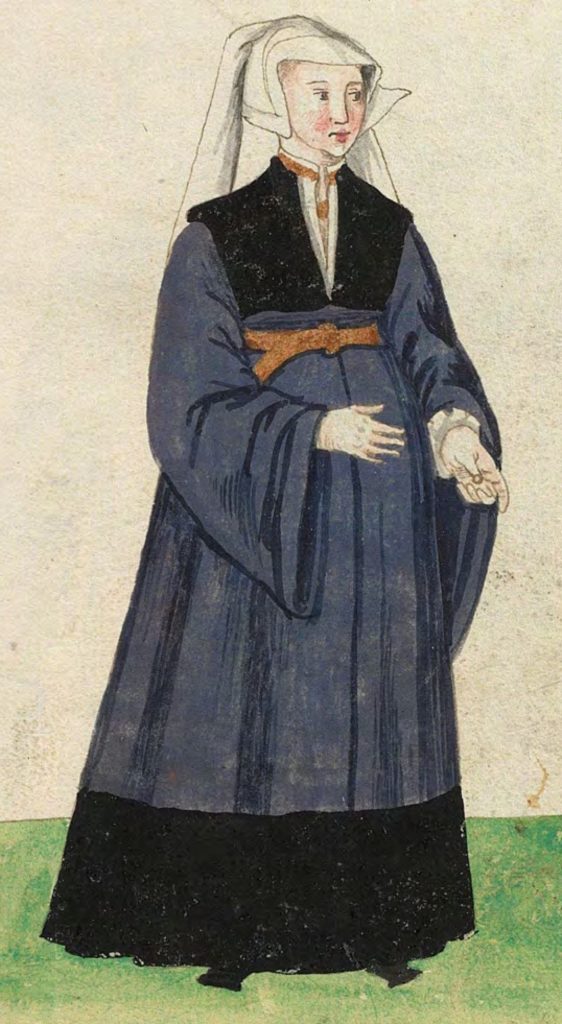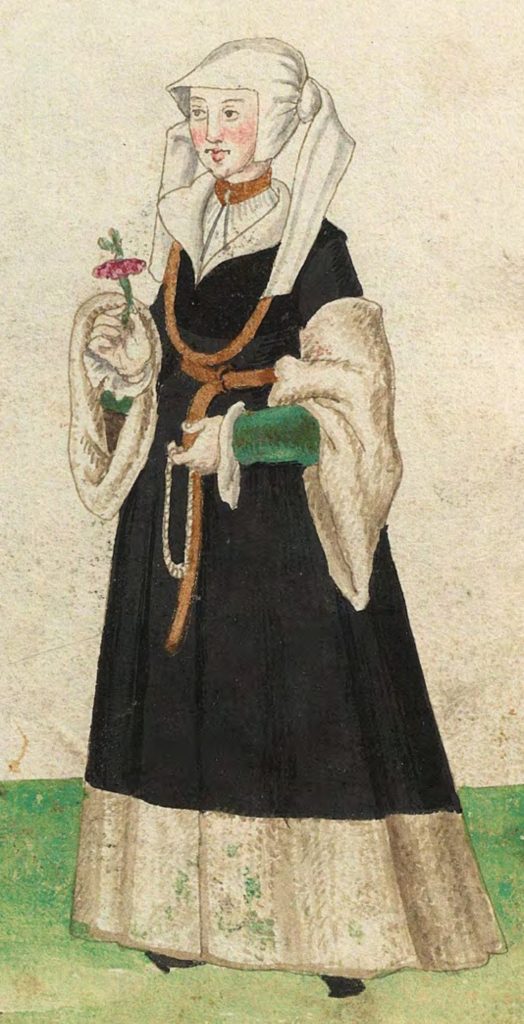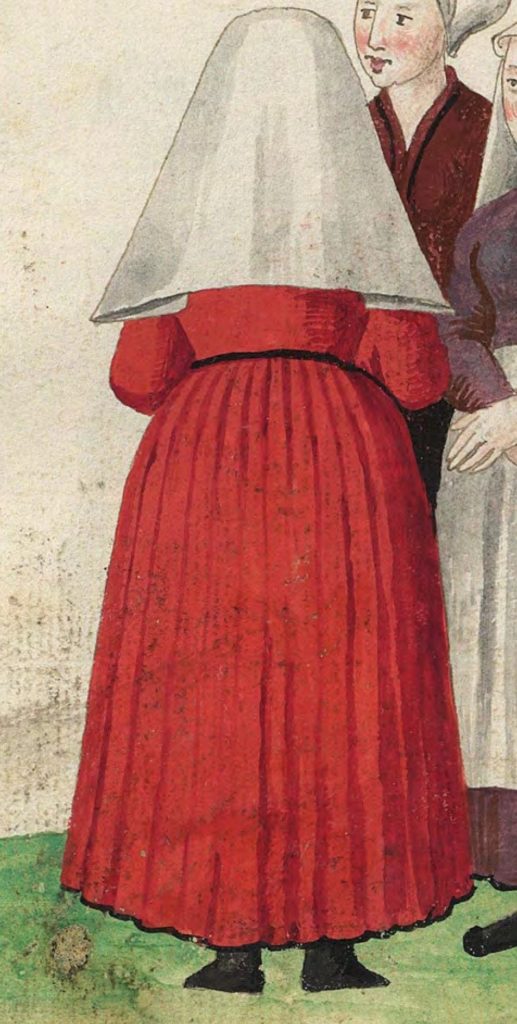Köln and environs- Códice de trajes
ZU KELN (Köln, Cologne)
This manuscript is rich in depictions of dress of the city of Cologne and it’s environs. Despite the artist not being familiar with many aspects of the styles of clothing worn, each figure does capture some aspects remarkably well. We have dress that indicates youth, status, and the colour palette is remarkably true.
The figures in 43v are likely to be unmarried women as they wear braids looped in front of their caps.
These figures appear to be based on portraits as both gowns have damask sleeve linings and a plain skirt front with no opening.
This combination is found in the portrait of Elisabeth Bellinghausen and seems to indicate these are different gowns to the more typical tappaert (tabbard) that is lined in fur and only held at the waist with a webbe (belt.)
The trellis design on the headdress of the first figure might suggest she is compiled from a number of allegorical depictions. While this trellis shape is use for a few portraits, it is one of the easiest designs to render in stained glass windows and large scale scenes depicting historical or biblical events.
The figure with the deep border of ermine with matching sleeve lining is clearly of high rank.
Ermine linings or listen (wide guarding at the hem) are quite common. Her gown is a rich reddish- brownish damask, and she also wears crimson velvet accessories. This combination in particular is well represented.
There is a figure depicted from behind that shows the fullness of the skirts at the back as compared to the front.
Another feature shown in this figure is a small gold piece positioned at the back of the linen headdress that appears to be gathered into or behind this piece.
This is repeated in hand drawn and printed figures of much later costume books. It can also be found in a painting by Bruegel.
Other accessories of note are the large cloaks, (heuken.)
These are worn on the head and are found across the Netherlands and in Cologne and Cleves. Each city or territory seems to have a unique variation and for Cologne it is the wide and flaring front piece that obscures the face from the side. It hangs in points at the side like an oversized collar. Other cloaks of this sort have a duckbilled or a pointed front.
Finally we have two figures of working women who wear vibrant red clothing with fitted sleeves worn over the upper arm.
Of note is the shape of the top edge of the sleeves. Rather than following the shape of a regular sleeve head, or even a tapered point, these are quite shallow with a very unique inverted U shaped tab.
This tab is used to secure the sleeve in place and is found in other art, such as the Quentel modelbuch, and subsequently in a number of copies printed elsewhere. They are also found on a medal by Hagnauer. Hagenaur was based on Cologne between 1535 and 1546 and seems to have had a similar difficulty with many costume details as many other artists.
IM STIFT ITTRICT
These two figures appear after the figures depicting Cologne but before those of Bonn.
ZU BUONT AM REIN (Bonn)
There are two groups of figures on two pages, the latter are headed with the region, the former are not. There is enough similarity between them to be likely to both represent Bonn, or other environs of the North Rhine.
These figures only bear some similarity to the Cologne style, which may reflect the very strong regional difference politically and as regards relative wealth.
The figures might also be taken from other cities and towns, the figures to the right bear a striking similarity to the depiction of Sibylla von Aich in a medallion by Hagenaur, and her portrait by Barthyl Bruyn.
The full veil hanging down the back is not common, but is represented usually with smaller and narrower shaped headpieces.
At this stage the vast majority of paintings of the region are only available in black and white, these are from a large scale effort pre WWII to record artworks through photography.
This manuscript may be a record of the colour of dress of 16th century dress of the North Rhine for some time to come.


